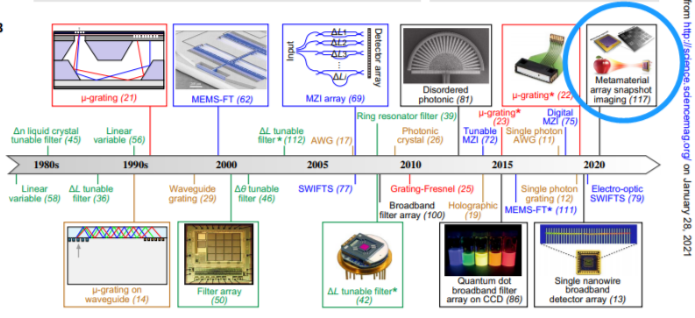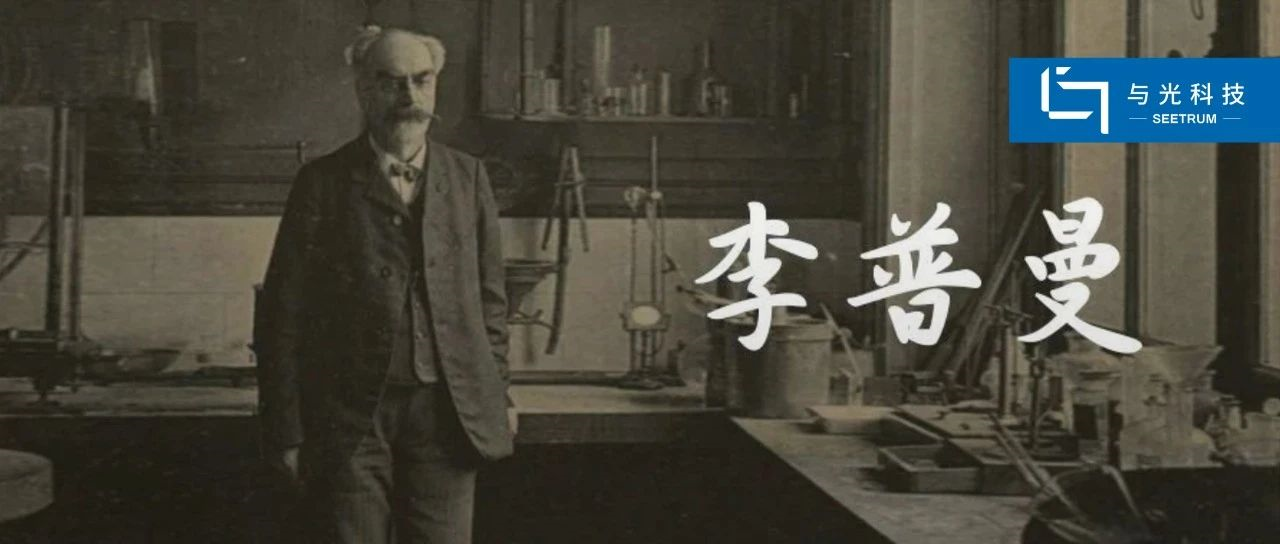On January 29, 2021, Science, the top international journal, published a review paper Miniaturization of optical spectrometers that lists Tsinghua University’s snapshot CMOS hyperspectral imaging chip technology as the latest research achievement in this field. SEETRUM takes the mission to achieve the industrialization and application of this techonology.

In the past ten years, miniature spectrometer has been undergoing active development. Consumer Electronics Show (CES) in 2017 and recent patent applications from mainstream mobile phone manufacturers indicate that we will soon see spectral sensing system embedded in smartphones. The promising prospect of embedded spectral sensing system is one of the driving forces for the rise and development of miniature spectrometers, which has also received great attention from the industry and investors. Besides, computational spectrometer has also become one of the most promising research directions. On the basis of hyperspectral imaging application that instantaneously captures spectral and spatial information, we set a long-term goal to realize a small, portable, snapshot-type spectral imager with high spectral and spatial resolution, which means each pixel is equivalent to a high-performance spectrometer. This system will be a milestone for current research. Current spectral imaging technologies generally involve movable scanning systems or spatial light modulators based on digital mirror devices. As the effective sensing area of the computing spectrometer shrinks to 10μm, it is fully feasible to achieve the hyperspectral imaging system. The snapshot CMOS hyperspectral imaging chip technology developed by Tsinghua University (117), as mentioned in the article, integrates the array of "superpixels” into a CMOS image sensor, where each "superpixel" is equivalent to a miniature spectrometer with independent spectral analysis function. (Compiled from original texts.)
Tsinghua University’s snapshot CMOS hyperspectral imaging chip technology is the result of over-ten years’ efforts from the Micro-Nano Optoelectronics Laboratory. It was proposed and developed by Associate Professor Cui Kaiyu from Professor Huang Yidong’s research group. The chip marks a successful CMOS integration. With the technology, a complete spectrum image can be obtained with one photo, or say, the spectrum information of different points in space can be obtained at one time. Each micro-spectrometer has an independent spectrum analysis function. The technical indicators (such as spectral resolution) of the miniature spectrometers have exceeded the best results reported around the world, and the integrated snapshot hyperspectral imaging chip is the first report in a public paper. The spectroscopic imaging chip can be manufactured by using mature semiconductor techniques and it is a silicon-based micro spectroscopic imaging solution that can be mass-produced. It is a great leap from a micro spectrometer to a spectroscopic imaging chip. SEETRUM takes the mission to achieve its industrialization and application.
SEETRUM is committed to leading the development of global spectrum chips, making spectrum perception ubiquitous. Led by a distinguished professor from Changjiang Scholars Program, SEETRUM has developed a snapshot CMOS hyperspectral imaging chip in an innovative way. This chip enjoys the features of high precision, low cost, and mass production, overcoming the weaknesses of large size and high price of existing spectral detection equipment that only supports scanning imaging. All these will help expand sensing dimensions for industries like consumer electronics, medical diagnosis, machine vision, and environmental monitoring etc.
“More recently, the development of spectral sensing systems embedded within smartphones has been evidenced, at CES (consumer electronics show) 2017 and in patent applications by major smartphone manufacturers, suggesting that an emergence into the public domain may be imminent. Indeed, the prospect of a device with a footprint suitable for the smartphone paradigm is arguably the most important factor driving extreme miniaturization of microspectrometer systems; a breakthrough demonstration here could prove pivotal in terms of attracting further attention and investment in this field. Although no reconstructive systems have reached commercial maturity as yet, the readily available processing power, coupled with the need for systems with minimized footprint and weight, make the smartphone platform an obvious area for these microspectrometers to emerge.”
“Perhaps most exciting are the possibilities for hyperspectral imaging applications involving the simultaneous capture of spectral and spatial information in a “data cube” with dimensions (x, y, λ). Here a long-term goal is a miniaturized, portable “snapshot” spectral imager with high spectral and spatial resolution—that is, a camera whereby each pixel holds its own high-performance spectrometer. Such a system would be a marked advance on many current strategies in development, which involve scanning systems with movable parts, or digital mirror device–based spatial light modulators (116). Given their simple (and usually planar) device frameworks, as the active sensing area of computational microspectrometers shrinks toward the ~10 μm scale, miniaturized snapshot imagers based on such concepts become increasingly feasible. Indeed, successful prototypes based on arrays of “superpixels,” each containing their own filter array, have very recently been reported (117, 118). ”








